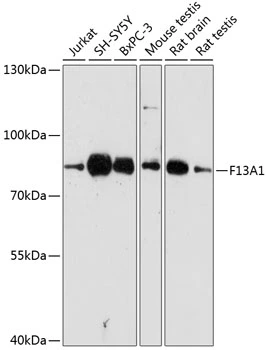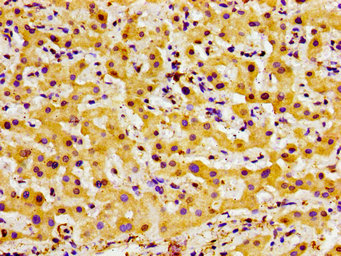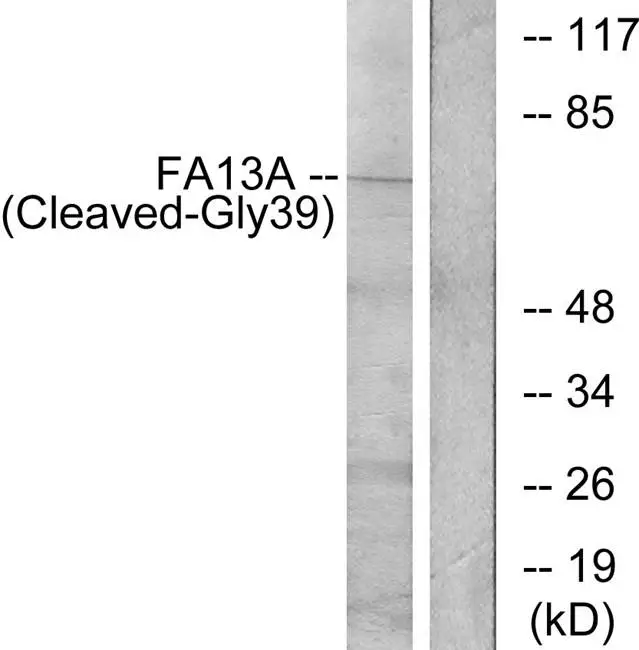Factor XIIIa antibody [MSVA-813R] HistoMAX(tm)
GTX04452
ApplicationsImmunoHistoChemistry, ImmunoHistoChemistry Paraffin
Product group Antibodies
TargetF13A1
Overview
- SupplierGeneTex
- Product NameFactor XIIIa antibody [MSVA-813R] HistoMAX(tm)
- Delivery Days Customer9
- Application Supplier NoteIHC-P: 1:100-1:200. *Optimal dilutions/concentrations should be determined by the researcher.Not tested in other applications.
- ApplicationsImmunoHistoChemistry, ImmunoHistoChemistry Paraffin
- CertificationResearch Use Only
- ClonalityMonoclonal
- Clone IDMSVA-813R
- Concentration0.2 mg/ml
- ConjugateUnconjugated
- Gene ID2162
- Target nameF13A1
- Target descriptioncoagulation factor XIII A chain
- Target synonymsbA525O21.1 (coagulation factor XIII, A1 polypeptide); coagulation factor XIII A chain; coagulation factor XIII, A polypeptide; coagulation factor XIII, A1 polypeptide; coagulation factor XIIIa; F13A; factor XIIIa; fibrin stabilizing factor, A subunit; fibrinoligase; FSF, A subunit; protein-glutamine gamma-glutamyltransferase A chain; TGase; transglutaminase A chain; transglutaminase. plasma
- HostRabbit
- IsotypeIgG
- Protein IDP00488
- Protein NameCoagulation factor XIII A chain
- Scientific DescriptionThis gene encodes the coagulation factor XIII A subunit. Coagulation factor XIII is the last zymogen to become activated in the blood coagulation cascade. Plasma factor XIII is a heterotetramer composed of 2 A subunits and 2 B subunits. The A subunits have catalytic function, and the B subunits do not have enzymatic activity and may serve as plasma carrier molecules. Platelet factor XIII is comprised only of 2 A subunits, which are identical to those of plasma origin. Upon cleavage of the activation peptide by thrombin and in the presence of calcium ion, the plasma factor XIII dissociates its B subunits and yields the same active enzyme, factor XIIIa, as platelet factor XIII. This enzyme acts as a transglutaminase to catalyze the formation of gamma-glutamyl-epsilon-lysine crosslinking between fibrin molecules, thus stabilizing the fibrin clot. It also crosslinks alpha-2-plasmin inhibitor, or fibronectin, to the alpha chains of fibrin. Factor XIII deficiency is classified into two categories: type I deficiency, characterized by the lack of both the A and B subunits; and type II deficiency, characterized by the lack of the A subunit alone. These defects can result in a lifelong bleeding tendency, defective wound healing, and habitual abortion. [provided by RefSeq, Jul 2008]
- Storage Instruction-20°C or -80°C,2°C to 8°C
- UNSPSC12352203







